The Holy Visual Trinity of Charli xcx, Chappell Roan & Sabrina Carpenter
A look back on the creative worlds behind the albums and songs of the Summer
Some days around 4 p.m., when there are only about two hours left in the workday, I’ll find myself at my computer typing in twitter.com to be redirected to X. I do this in an attempt to giggle at silly cultural memes for approximately five minutes to give me the strength and motivation to finish the rest of my work. This summer, the posts that made me smile the most were centered around the trifecta of Charli xcx, Chappell Roan, and Sabrina Carpenter.
It’s difficult to pinpoint when the phenomena exactly began… but the culmination seems to find itself at the end of June when Chappell entered the Billboard Hot 100 for the first time with not one but four songs. Around the same time, according to TIME Magazine, Brat “debuted at No. 2 on the UK Albums Chart and at No. 3 on the Billboard 200 album chart—making it Charli’s highest charting album in the US and her second top 10 album in the UK… It is also one of Charli’s best-reviewed albums by critics.” And then in early July, Sabrina became the “first female artist to hold both the number one and number two positions on the [UK] singles chart for three consecutive weeks,” according to the BBC.
Many outlets have attempted to explain the creation of this holy pop trinity. Mikael Wood for The Los Angeles Times notes that all three popstars share longer career arcs than recent sensations Olivia Rodrigo and Billie Eilish (Charli first released music in 2012, Carpenter in 2015, and Roan in 2018). Along with Spencer Kornhaber for The Atlantic, the two writers describe how, within that time, all three women have constructed their own niche “feisty” and “brash” viewpoints that millions of fans have found solace in amidst the mainstream success of stars like Taylor and Dua. But it’s not just the lyrics and vocal talent that have cemented their visions; it’s their visual worlds, too.
Last Summer, Barbie was the pop culture obsession with its hot pink marketing campaign and soundtrack, which Charli xcx appeared on with “Speed Drive.” A year later, the singer chose an unmistakable neon green for her BRAT album campaign, taking notes from her film feature. The color envelops her album cover with a purposefully pixelated ‘brat’ in the font ABC ROM designed by typeface studio Dinamo. Creative directed by Imogene Strauss, the cover and color have turned into an internet phenomenon, with Charli and the team facilitating a ‘make your own’ brat generator. BRAT now parades around the internet as heat wave advisories, train updates, endless memes, and banners for presidential candidates.
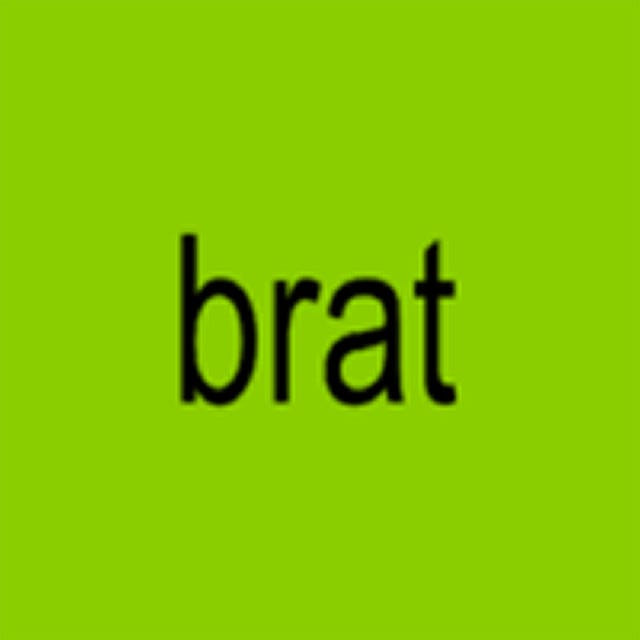
On an episode of Popcast, journalists Lindsay Zoladz, Shaad D’Souza, and Meaghan Garvey discuss themes of jealousy and competition found throughout BRAT. Zoladz states, “The succinctness, the bitchiness… is a quality that I miss in pop music right now. I’m glad Charli is giving us a little bit of that attitude and not worrying about being likable so much or presenting this likable persona.” XCX doubled down on this bitchiness when many outlets dubbed “brat summer” dead at the end of July. In response, she released a remix for “Guess” featuring Billie Eilish.
Their conversation recalls the phrase “green with envy.” Instead of tired songs about fame, love, and heartbreak, Charli shares vulnerable experiences of greed, insecurity, and discontent with herself. It’s interesting to note that this is XCX’s first album without her photograph on the cover. Only once you literally tear through the tape and perforated vinyl packaging do you find images of the singer. Not having her likeness perpetuate the campaign has allowed BRAT to be not just about her emotions but a generational, cultural attitude.

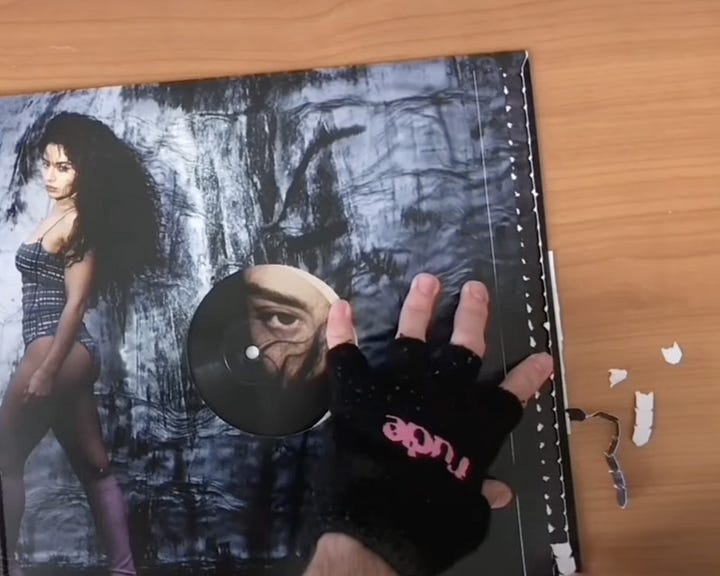
If Charli is the queen of the internet, Chappell Roan is the queen of the live performance. Ever since supporting Olivia Rodrigo on her Guts Tour along with the release of her single “Good Luck, Babe!” Chappell’s popularity has exponentially increased along with her ability to further achieve her creative.
Theatrics and an ode to the drag queen have always been essential to Roan’s queer pop. On her 2023 headline tour, she assigned themes for each live show to allow fans the opportunity to express themselves through costume. Before 2024, her go-to performance ensemble consisted of a powdered face, a bedazzled leotard, rhinestones, and sparkly hairpins. However, a shift occurred during her late-night debut on Stephen Colbert in February, and her creative vision was executed on another level. In deconstructed Marie Antoinette-esque regalia, Chappell and her band performed on a campy set of pink hearts and flowing curtains.
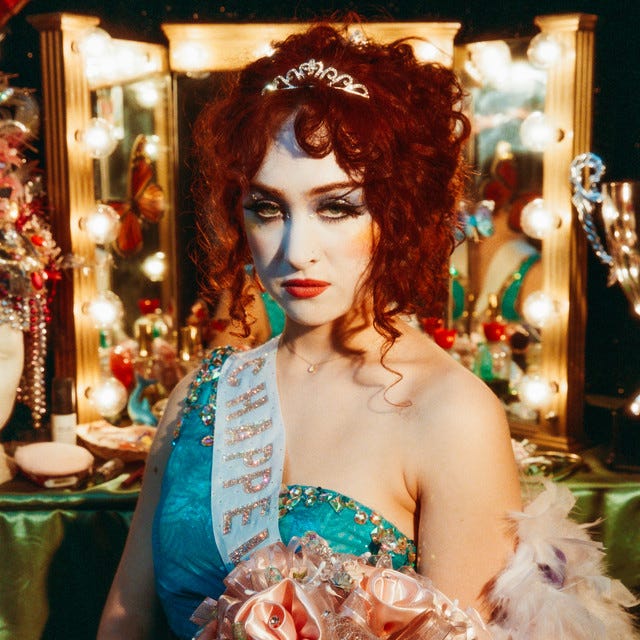
Then, in a state of hyperspeed came her butterfly Coachella set inspired by Lady Miss Kier, a highly crafted Lady Liberty Gov Ball performance, Lucha Libre Lollapalooza drag, “Mother God” fit at Hinterland, and perhaps the most mesmerizing of them all, her interview and performance on Jimmy Fallon. Channeling mid-2000s Lady Gaga, the singer appeared on late night in feathers galore, from her eyelashes to nails. All styled by Genesis Webb, Chappell is upping the ante for herself every time, making fans wonder in anticipation what she’ll do next.
This build-up makes me curious about how this will spawn her next album cover and campaign. The cover of The Rise and Fall of a Midwest Princess reminds me of Hole’s Live Through This meets pageant contestant. It’s been done before, and doesn’t feel as unique as Chappell is at this current point and time. But with the Miss Piggy single cover of “Good Luck, Babe!” she leaps forward into the uncharted territory I’m yearning for her to dive into. One can only imagine she’ll continue redefining what a drag queen can look like and accomplish.
Last, we find Sabrina Carpenter, the most pop-commodified of the three, growing up a Disney Channel star and opening for Taylor Swift on her Eras tour. Petite, blonde, and blue-eyed, she comes across as the ideal woman, just like a pinup girl. Priscilla Frank for Huff Post describes the cultural figure, “She's risqué but never explicit. She's flirtatious but fiercely independent. She's erotic but always safe for work, a welcome sight for your teenage cousin and prudish mother alike. She's the pin-up girl, an all-natural American sweetheart created to win the adoration of men across the country.”
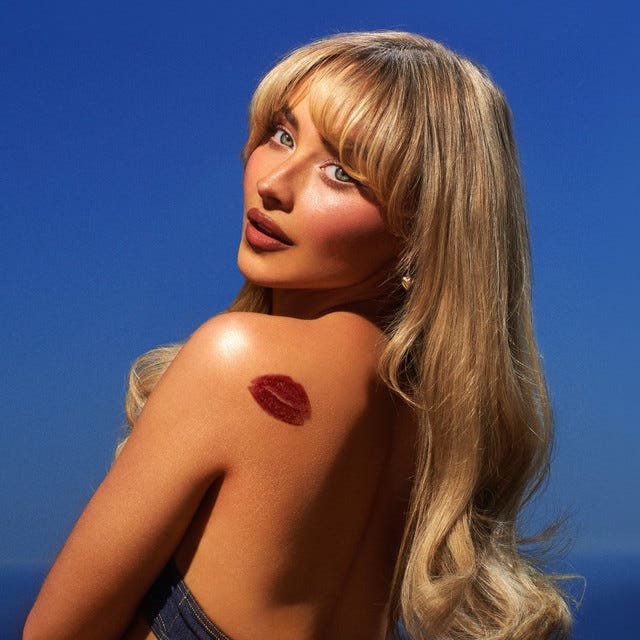
On the contrary, Sabrina isn’t looking to win the adoration of any man. She turns her damsel in distress persona on its head with lyrics like “Oh, he looks so cute wrapped around my finger” on “Espresso,” “Come right on me, I mean camaraderie” on “Bed Chem,” and her infamous curated live outros for “Nonsense.” The sexual innuendos aren’t a coincidence. She’s cleverly calibrated to appear sweet to mask her spice. For The Atlantic, Spencer Kornhaber writes, “So often in pop history, feminine performances of sexual power have seemed, on some level, shaped by and for men. Carpenter might appear to fit that mold with her vintage-pinup fashion aesthetic, all teddies and tiny skirts. But the who, me? attitude that she projects is knowing and ironic.”
Look no further than the packaging for Short n’ Sweet creative directed by Dannah Gottlieb. The album cover pictures a PG Carpenter decorated with a red lipstick stain on her shoulder. But upon opening the vinyl, an image of the singer dressed in baby blue lingerie fills the gatefold, acting as a coy Playboy centerfold. “Sabrina Carpenter, She leaves quite an impression…” wraps around her blue heel as she stares dreamily off-camera, lying in front of a fireplace. A lyric insert sheet designed as a newspaper quarterly that recalls seeking arrangement ads is also included. Regarding the CD, a booklet extends the erotic magazine world further with subscription pages, lingerie editorials, and jewelry product placement. The ironic pinup is precisely the persona Sabrina needs to imbue to break out of the cookie-cutter pop star mold she grew up in.
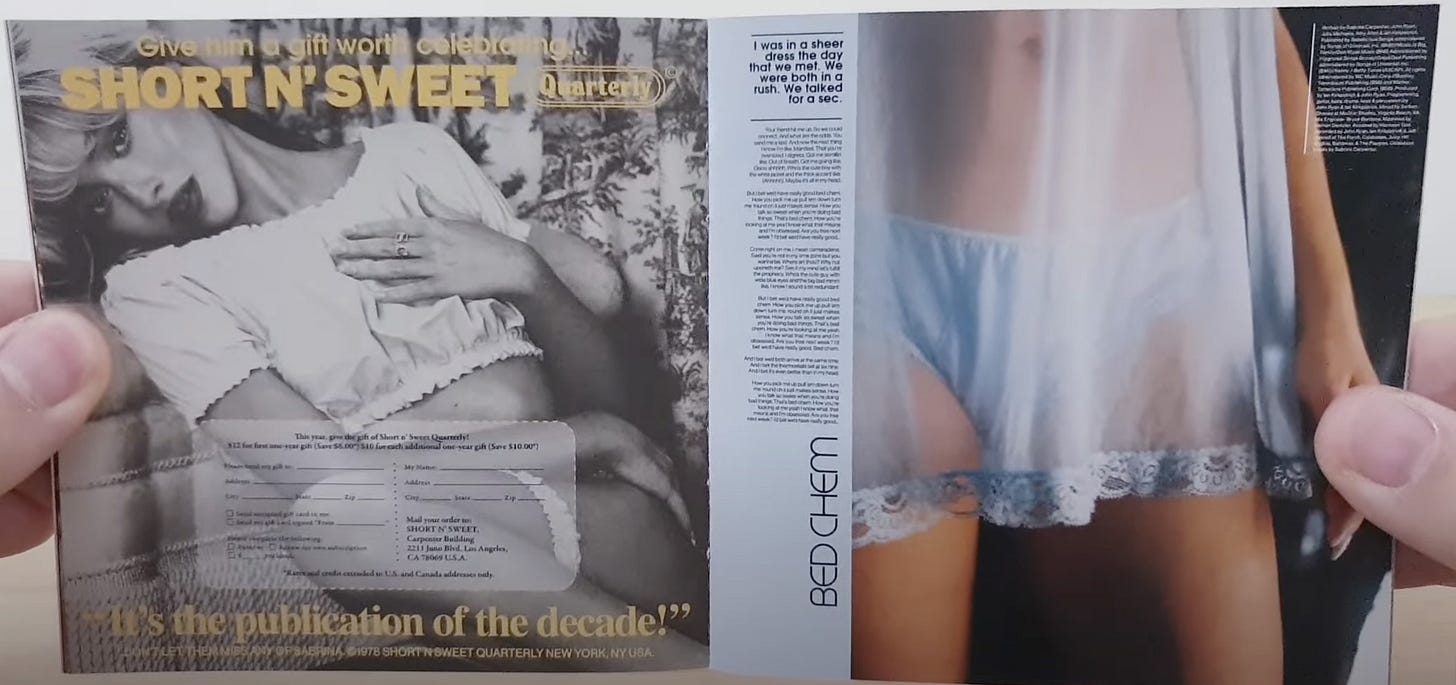
One factor that The Los Angeles Times and The Atlantic fail to connect is how all three musicians purposefully challenge the visual stereotype of how a woman in music should be portrayed. They’re not just breaking it; they’re personally confronting it. It’s refreshing to note that all three collaborated with female creative directors: Charli with Imogene Strauss, Sabrina with Dannah Gottlieb, and Chappell with Ramisha Sattar, and stylist Genesis Webb. With each of these partnerships, they have visualized unabashedly distinctive perspectives, unlike the ones the industry had imprinted on them in years prior. The true success of this summer’s trinity is that Charli, Chappell, and Sabrina realized that was the key to breaking free simultaneously.
The Art of Cover Art is a free educational and inspirational resource. If you have $5/ month to spare, it would be very helpful in furthering my research. Or, if you think a friend might enjoy this newsletter, the best way to pay it forward is by sharing!

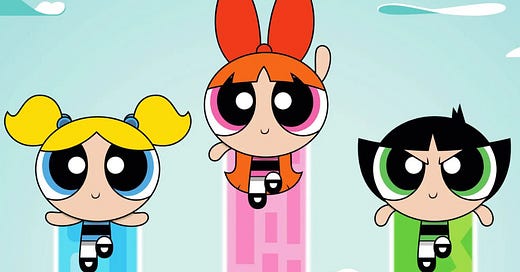



In year, when somebody talks about them, the proper response will be, "who?"